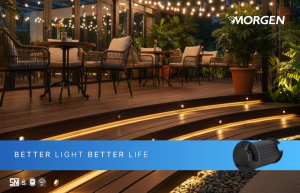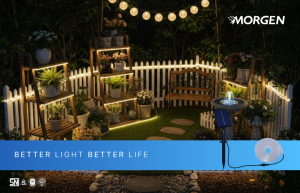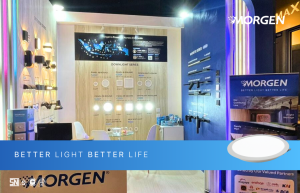Proper lighting is essential for both comfort and functionality in a room. When choosing LED lights, calculating the right lighting requirement is a crucial step to avoid excessive brightness or dimness. But have you ever been confused about how many LED lights you actually need? To figure this out, you need to understand two key factors: wattage and lumens.
Wattage represents the amount of energy a light bulb consumes. LED lights are known for their low wattage consumption compared to other types of bulbs, making them more energy-efficient. On the other hand, lumens measure the brightness level of a light. The higher the lumens, the brighter the light.
To achieve optimal lighting, here’s a simple way to calculate the LED lighting needs for your room.
1. Determine the Type and Function of the Room
Each room has different lighting requirements, usually measured in lux (lumens per square meter). Below are general lighting standards:
- Living room: Moderate lighting (100–300 lumens/m²).
- Workspace: Bright lighting (300–500 lumens/m²).
- Kitchen: Fairly bright lighting (250–400 lumens/m²).
- Bedroom: Soft lighting (100–200 lumens/m²).
2. Calculate the Room Area
Use the formula:
Room area (m²) = length × width
Example: If your living room is 4 meters × 5 meters, the area is 20 m².
3. Calculate the Total Lumen Requirement
Multiply the room area by the recommended lighting standard for that space.
Example: For a living room (200 lumens/m²) with an area of 20 m², the total required lumens is: 20 × 200 = 4000 lumens
This means the room needs a total of 4000 lumens.
4. Choose the Right LED Light
After determining the total lumens needed, check the specifications of the LED lights you plan to use. For example, a 10-watt LED bulb typically produces around 800 lumens. If the room requires 4000 lumens, you will need:
4000 lumens ÷ 800 lumens = 5 LED bulbs (10 watts each)
So, install five 10-watt LED bulbs to achieve the ideal lighting.
However, if you choose Morgen LED lights, you’ll get more efficient lighting because these bulbs provide higher illumination while consuming less energy. For instance, a 10-watt Morgen LED Bulb Ultimate produces 1400 lumens, meaning you only need:
4000 lumens ÷ 1400 lumens = 3 units of 10-watt Morgen LED Bulb Ultimate
By using Morgen LED, you save two LED bulbs, reducing both energy consumption and electricity costs!
5. Select the Right Light Color
Besides calculating the required LED lighting, choosing the right light color is also important. Each light color affects our activities differently. LED lights come in various color temperatures, such as:
- Warm white (3000K): Creates a cozy and relaxing atmosphere, ideal for bedrooms or lounge areas.
- Natural white (4000K): Provides bright but comfortable lighting, perfect for kitchens or family rooms.
- Cool daylight (6500K): Offers brighter lighting to enhance focus, ideal for study rooms or workspaces.
Calculating LED lighting needs is simple if you know your room’s area and the required brightness level. With the right LED lights, you can achieve maximum illumination while saving energy. Also, choose high-quality LED lights to ensure durability and optimal performance.
Switch to high-quality LED lights now! Morgen LED offers bright, long-lasting, and energy-efficient lighting solutions. Get them today from Morgen Official Store on Shopee and Tokopedia!







